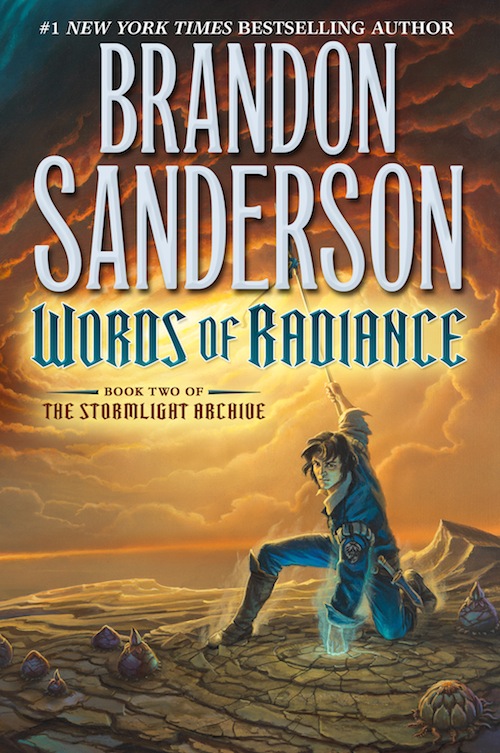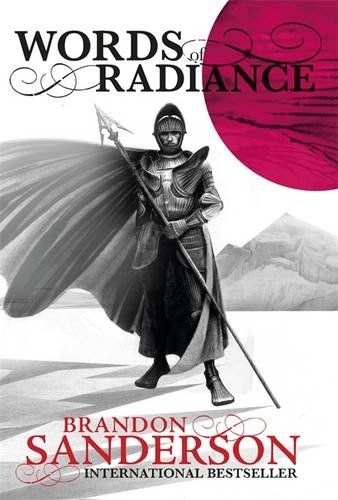As I open another chapter of the Stormlight Grimoire, my in-depth exploration of the many magical systems of Brandon Sanderson’s Stormlight Archive, I find that it is time to turn to a new topic. There are volumes more to be said about Surgebinders, and even, I’m sure, more to be discovered about the Windrunners, to whom I paid special attention last time, but that will have to wait for future books. In the meantime, let’s talk about Soulcasting, the magical process of transforming rocks into wheat, Settlers of Catan style.
Oh, I’m sorry, maybe I forgot to mention that I’m a huge nerd. Deal with it?
Soulcasting, in broad strokes, is the ability to turn just about any substance into one of ten categories of substance by focusing stormlight through gemstones. So far as we can tell it is limited to only ten substances, although if the Mistborn trilogy has anything to teach us it is not to be satisfied with the established body of knowledge in one of Brandon Sanderson’s universes. New gemstones might be discovered with unknown soulcasting properties, just as Vin discovered new allomantic alloys. For now, however, here is the list of gemstones, with their associated properties:
|
Gemstone |
Soulcasting Properties |
|
Sapphire |
Translucent gas, air |
|
Smokestone |
Opaque gas, smoke, fog |
|
Ruby |
Fire |
|
Diamond |
Quartz, glass, crystal |
|
Emerald |
Wood, plants, moss |
|
Garnet |
Blood, all non-oil liquid |
|
Zircon |
All kinds of oil |
|
Amethyst |
Metal |
|
Topaz |
Rock and stone |
|
Heliodor |
Meat, flesh |
Sadly for my Catan analogy, it seems extremely difficult, if not impossible, to turn rocks into sheep using this system.
The Chemistry of Soulcasting
These designations seem arbitrary at first. In fact, it was this arbitrariness that made me suspect that there were more Soulcasting-enabled gemstones. As I attempted to think of a substance that would fall outside one of these categories, however, I found myself mostly at a loss. I’m eager to hear if any of you can think of some simple substance (so, not a sheep) that would fall outside all of these categories. Given that lead-in, I think I might be able to figure out the underlying physical/chemical reasons that define these categories and make each of them worthy of being separate.
Let’s look first at Sapphire and Smokestone. Both can Soulcast specific kinds of gasses. What separates them is their opacity. Really? That can’t be right. Looking into it, I don’t think that any of the standard elemental gases are technically “opaque” in normal conditions. The other things that Smokestone can Soulcast, smoke and fog, are both mixtures that contain not only gases, but also airborne solid and liquid particulates. Air, on the other hand, is by pure definition a mixture of gases. I’d bet you anything that Soulcast air contains no airborne solid or liquid particulates.
With this separation in mind, I think it’s possible to detect that the different categories of Soulcasting are actually separated chemically, rather than the somewhat impressionistic categories we currently have. So blood, in this example, is a bit of a red herring. It’s metaphorically charged, for certain, and Jasnah soulcasting Shallan’s blood to remove the poison is certainly striking, but the fact that blood is listed first covers up the fact that garnets can Soulcast any non-oil liquid. Oils, on the other hand, have a totally different chemical structure than blood, or water, or fruit juice, or what have you. They’re hydrophobic, actively repelling water, and lipophilic, making them capable of mixing with other oils and fats. And it makes perfect sense to separate quartz and crystals from other kinds of rocks and stone: molecules in crystals form a crystal lattice, arranging themselves in an ordered pattern in three dimensions. Most rocks and metals are instead polycrystals, made up of many microscopic crystals fused together. It also explains why fire is its own category. Unlike everything else on this list, fire isn’t a solid, a liquid, or a gas. It is, instead, a plasma. I’m sure that if the people of Roshar could conceptualize any other plasmas, they could Soulcast them using rubies.
 I’m very curious about the Soulcasting of plants. At face value, plants are a lot more complicated than the other things on this list. We know a lot more about Soulcasting plant matter, though, since it’s the most common task that Soulcasters perform. Soulcasted food is apparently very bland and mushy. Perhaps there are people who can Soulcast things into a complicated living system like an oak tree or a prickletac, but that must be a task of monumental difficulty. Likewise with heliodor, which can craft meat or flesh. There might someday be a Soulcaster who can make a bunch of rocks into a real sheep. I’ll hold onto hope.
I’m very curious about the Soulcasting of plants. At face value, plants are a lot more complicated than the other things on this list. We know a lot more about Soulcasting plant matter, though, since it’s the most common task that Soulcasters perform. Soulcasted food is apparently very bland and mushy. Perhaps there are people who can Soulcast things into a complicated living system like an oak tree or a prickletac, but that must be a task of monumental difficulty. Likewise with heliodor, which can craft meat or flesh. There might someday be a Soulcaster who can make a bunch of rocks into a real sheep. I’ll hold onto hope.
Actual Practice
There are a lot of different ways to Soulcast. Because Jasnah and Shallan are potential initiates to two different orders, the Elsecallers and Lightweavers, if I remember correctly, we know that at least two orders of the Knights Radiant were able to Soulcast. In addition, fabrials have been devised that allow non-Surgebinders to Soulcast.
Shallan, who discovered Soulcasting entirely by accident, managed it through communication with a spren. While she was panicking about the symbol-headed invisible beings that she thought were driving her mad or coming to kill her, one of them spoke into her mind, asking her what she was. She told it the truth, that she was terrified, and was instantly transported to a vast sea of glass beads. While flailing about, she grabbed one of them, which corresponded to a glass goblet in the room around her, and convinced it to change. Stormlight which she had unwittingly drawn in flowed from her into the goblet, and it melted into blood.
I’m fairly certain that the process of buying access to that sea of glass beads with a personal truth is unique to the order of Lightweavers. The journey to that location, which is DEFINITELY the Shadesmar, in the Cognitive Realm, is also requisite for the Elsecallers, since Jasnah follows Shallan there. I’m not certain that both orders require specific gemstones to Soulcast specific essences. Jasnah called for a garnet when she needed to Soulcast Shallan’s blood, and Shallan had one when she turned the goblet into blood, so I think it’s likely. It’s the only magical art that care at all whether its Stormlight comes from gemstones, let alone specific kinds of gemstones.
What’s fascinating about all this is that, although the distinctions I made above are based on differences in chemical and physical arrangements, the process of actually Soulcasting seems to be much, much fuzzier. Shallan wasn’t thinking about the difference between a crystal lattice and blood. She wasn’t even thinking about blood. She was talking to a little bead that decided it was happy to change from a cup into a pool of blood. Soulcasting involves interacting directly with objects as they are represented in the Cognitive Realm. It doesn’t just have to change their physical structure, it has to convince them to occupy a different conceptual space. It seems to require more persuasion and bribery than artistry. I expect, however, that watching Shallan practice will reveal depths of possible artistry to Soulcasting.
 I know almost nothing about the real experience of Soulcasting using a fabrial. Throughout the entire course of The Way of Kings I don’t think we even see anyone have a conversation with someone who Soulcasts using a Soulcaster fabrial. Interlude I-8: Geranid, gives us a hint, though. The ardent Ashir speculates as to whether people can eat in Shadesmar, and decides to look to see if anyone’s written about the experience. The ardentia knows about Shadesmar, and also controls the Soulcasters, so the fabrials might also involve this same journey and bargaining process. It seems too… polite, though. So much of the artifabrian’s task seems to involve forcing order onto a disordered state and finding creative ways to break the rules.
I know almost nothing about the real experience of Soulcasting using a fabrial. Throughout the entire course of The Way of Kings I don’t think we even see anyone have a conversation with someone who Soulcasts using a Soulcaster fabrial. Interlude I-8: Geranid, gives us a hint, though. The ardent Ashir speculates as to whether people can eat in Shadesmar, and decides to look to see if anyone’s written about the experience. The ardentia knows about Shadesmar, and also controls the Soulcasters, so the fabrials might also involve this same journey and bargaining process. It seems too… polite, though. So much of the artifabrian’s task seems to involve forcing order onto a disordered state and finding creative ways to break the rules.
Next time in the Stormlight Grimoire I’m going to discuss fabrials, the many uses and construction thereof. In the meantime, I wish you all a splendid Middlefest, which is about as Mayclose as I can come to a seasonal winter holiday from Roshar. May you have good company and good, non-Soulcast food.
Carl Engle-Laird is an editorial assistant and Way of Kings rereader for Tor.com, as well as its resident Stormlight correspondent. He can lose a game of Catan within two moves. He dares you to beat his record. You can follow him on Twitter here.










